INSPIRATION • May 2020
Virtual travel: inside Europe’s top museums and galleries
Home crafts may be enjoying a welcome resurgence, but there are plenty of other ways to get your creative fix while staying put. Luckily, many leading museums are bringing their spectacular artworks straight to your screen. Not sure where to start? Settle in, as insiders lead us on a digital discovery of their highlights
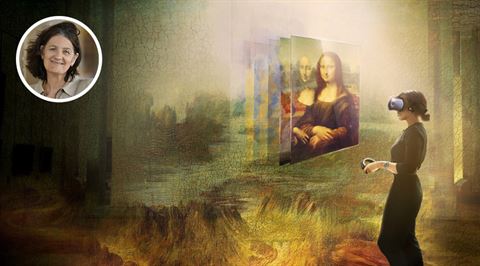
Musée du Louvre, Paris
Says who? Dominique de Font-Réaulx, Director of Interpretation and Cultural Programming
One of the projects that I am most proud of is the virtual reality experience we developed last year for the Leonardo exhibition at the Louvre. Now available as an app and presented on the museum website, it offers a closer look at Leonardo da Vinci’s famous Mona Lisa. We wanted to offer new insight into the painting, to tell its story while taking the viewer, or visitor, beyond the glass and into the scene itself, to meet ‘Mona Lisa’ in the loggia she posed in for the Florentine master. The details of how the artwork was conceived – the sitter’s pose, her expression, the treatment of light – are also presented in a completely new way. And, at the very end, we are flown away in one of the flying machines invented by the great genius – a breathtaking experience. Download the app here.
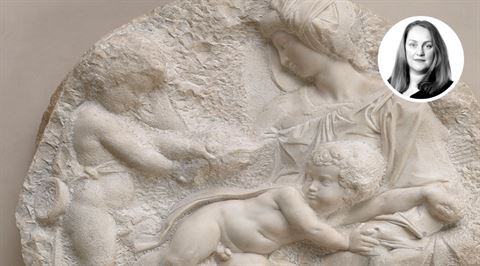
The Royal Academy, London
Says who? Rebecca Lyons, Director of Learning and Collections
Michelango’s Taddei Tondo (pictured) is the only work in marble by Michelangelo in the United Kingdom, and is a real highlight of the Royal Academy Collection. A close look at this depiction of the Virgin and Child reveals multiple marks from the chisels and tools that were used by Michelangelo to work on and smooth the surface. In these marks you can imagine him holding the tools, making his choices, breathing life into cold, hard marble. The ‘Tondo’ can (usually) be seen for free in the RA Collection Gallery, but today you can explore the collection online here.
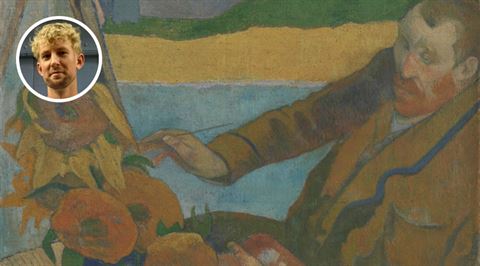
The Van Gogh Museum, Amsterdam
Says who? Joost van der Hoeven, Research Associate
In Vincent van Gogh Painting Sunflowers by Paul Gauguin (pictured), the artist portrays a fixated Van Gogh – as if he is not paying any attention to his surroundings or, more importantly, to the possibilities of his own imagination. To me, this painting is the perfect summary of the discussions the two painters always had: Van Gogh wanted to paint reality (something Gauguin often criticised) and Gauguin wanted to portray his imagination. Gauguin made this portrait in the Yellow House in Arles, in which the two artists spent some turbulent time together in 1888. This painting makes you wonder: on which side of the debate do you fall? Take a virtual dive into the work of Van Gogh here.
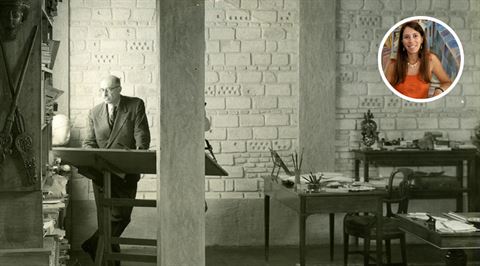
Benaki Museum, Athens
Says who? Ioanna Moraiti, Curator, Ghika Gallery Archive
The Ghika Gallery, an annexe of the Benaki Museum, was the home of Greek painter Nikos Hadjikyriakos-Ghika. This virtual tour of the gallery offers a journey into his life and art. Start on the third floor with his early works, inspired by adventures to the Far East, London and more. On floors four and five, you’ll find yourself walking in the painter’s very own flat and studio, where stories emerge with every step: his friendship with Patrick Leigh Fermor, his explorations in architecture, his easels and painting tools, the folk toys and works of art he collected on his journeys. They all bear testimony to a life both cosmopolitan and faithful to Greek tradition.
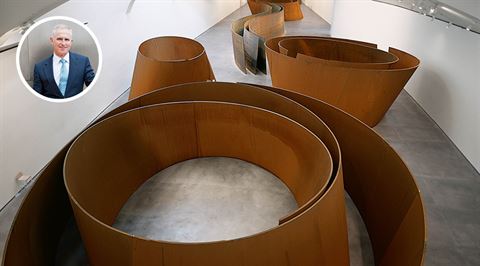
Guggenheim Bilbao
Says who? Juan Ignacio Vidarte, Director General
The Matter of Time (pictured) is one of the most important artworks of the age. Commissioning this installation from Richard Serra in 2003 was a momentous decision, and it is undoubtedly Serra’s most fascinating rumination on the nature of space, sculpture, reflecting the processes of investigation, questioning and searching. In the sculptor’s own words, “One need not know anything about sculpture to experience the work.” The conceptual complexity of the individual pieces and of the installation as a whole (made up of several steel spirals), combined with his treatment of the space within the gallery, make this a unique phenomenon in the recent history of art. Take a look and listen to the audio guide here.
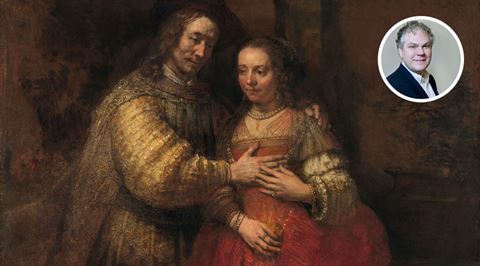
Rijksmuseum, Amsterdam
Says who? Jonathan Bikker, Curator of Research
Arguably, the last cabinet of the Rijksmuseum’s Gallery of Honour (on your left as you face The Night Watch – which can be experienced online here) is better viewed in a virtual tour than in real life with other visitors. This cabinet contains two spectacular late works by Rembrandt that are all about seeing and being seen. In The Syndics, the six men dressed in black react to you, while the opposite occurs within The Jewish Bride (pictured), as newlyweds Isaac and Rebecca remain unaware that King Abimelech is spying on them. You don’t see the king, however, because Rembrandt has cast you in his role. Check out the Gallery of Honour for yourself here.
This article has been tagged Technology, Travel Tips
More from previous issues

British Airways and friends: offering a helping hand
While British Airways spends more time on the ground over the coming weeks, the airline and its partners get to work helping the nation

Travel quiz: can you guess the missing landmark?
You know them well, but can you identify these famous buildings and monuments even when they're gone?

Wanderlust watch list: films with inspiring locations
When it comes to filming locations, not all movies are created equal. The Club takes a look at the most inspiring from recent cinema

Virtual travel: the great American wilderness
With help from some crafty camera work, The Club crosses the virtual frontier to take a closer look at the USA’s wildest spots